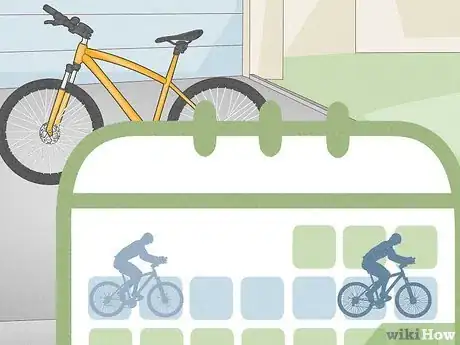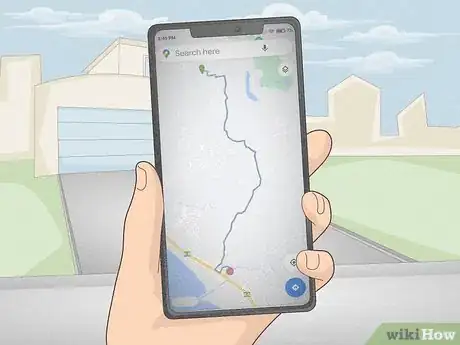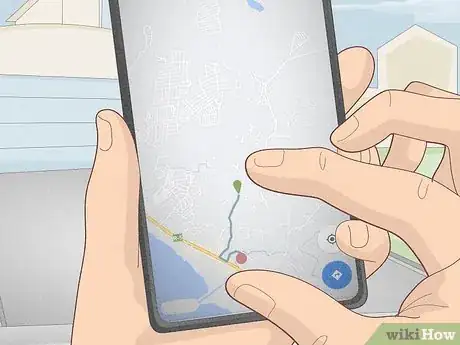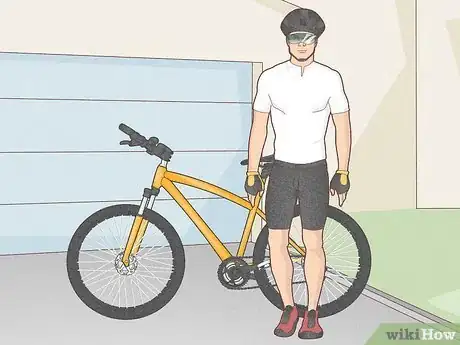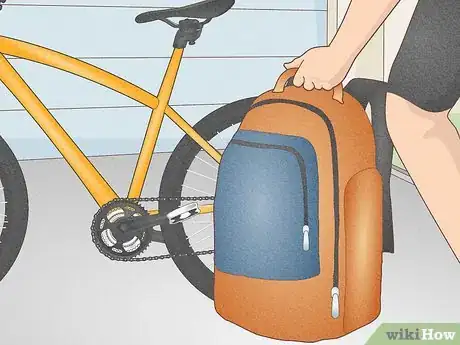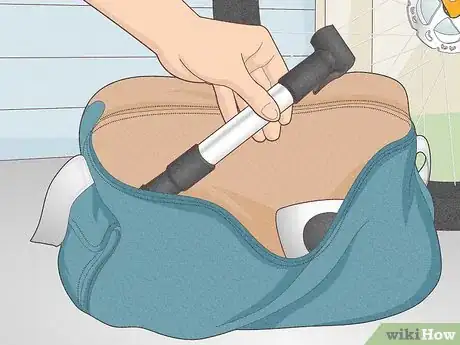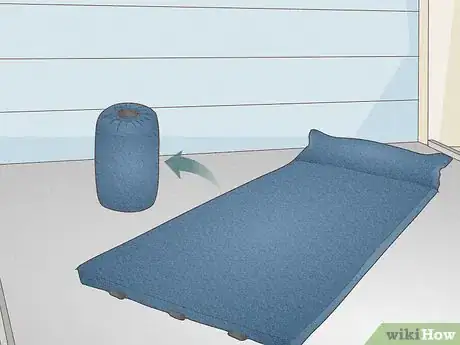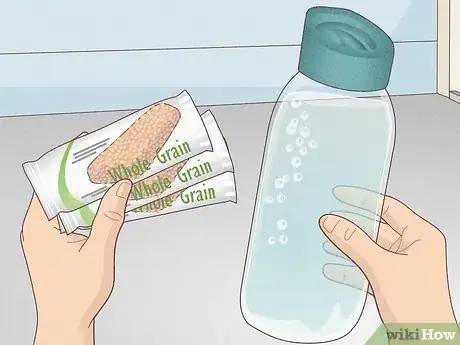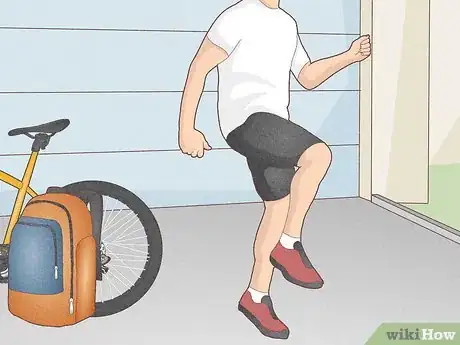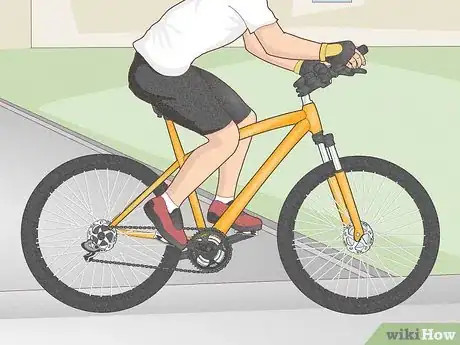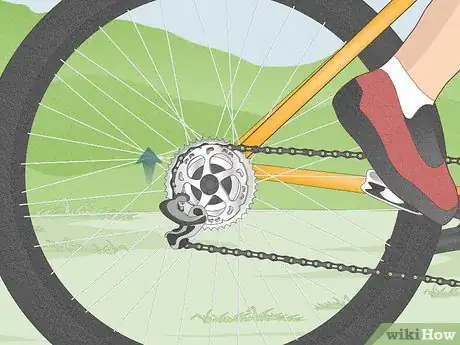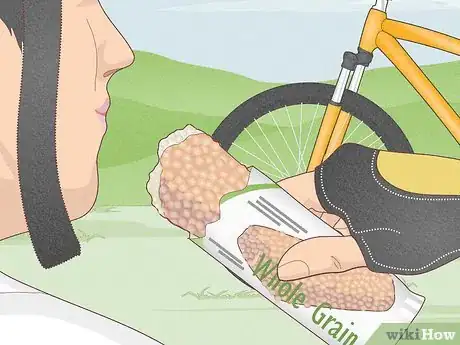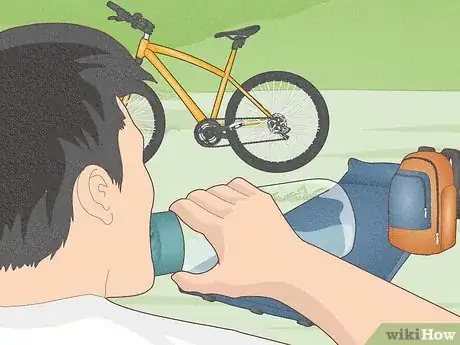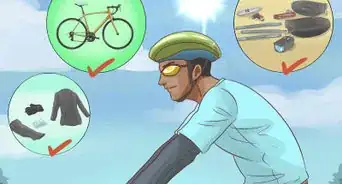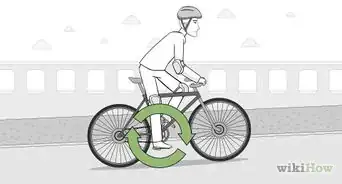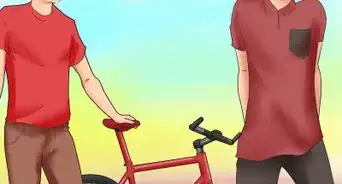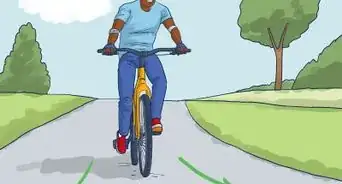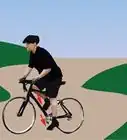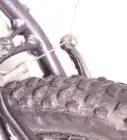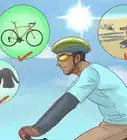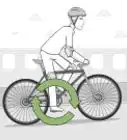wikiHow is a “wiki,” similar to Wikipedia, which means that many of our articles are co-written by multiple authors. To create this article, 37 people, some anonymous, worked to edit and improve it over time.
There are 7 references cited in this article, which can be found at the bottom of the page.
wikiHow marks an article as reader-approved once it receives enough positive feedback. In this case, 88% of readers who voted found the article helpful, earning it our reader-approved status.
This article has been viewed 248,402 times.
Learn more...
Whether you are racing or touring, long-distance cycling can be very rewarding. In general, it is more important to prepare your mind and your gear for the challenge ahead than it is to exhaustively train your body. The best way to physically train for a long cycling trip is to take a long cycling trip! There are, however, a number of mental and logistical steps that you can take to make the journey go more smoothly.
Steps
Route Logistics
-
1Decide how long you'll be gone. The type and amount of food and gear that you bring are highly dependent upon the sort of trip that you're taking. If you'll only be gone for the day, then you'll need much less gear than if you plan to be on the road for the week, the month, or the year. Set your vision and check your expectations. Remember that you will need to carry everything you use.
-
2Plan your route. Look at a map, and chart out where you want to go. If you have a destination in mind, figure out an exciting way to get there. If your vision is looser, try to at least pick an initial goal to shoot for. The average long-distance cyclist goes between 40–60 miles (64–97 km) each day, although it is quite common to tackle much longer and much shorter distances.[1]
- You may find that you start off cycling shorter distances, and work your way up into the 100+ kilometer (62+ mile) range. Plan this gradual strengthening into your route.
- Carry a map, a standalone GPS, or a smartphone with downloaded maps of the areas you'll bike through. Think ahead to possible stops in towns, rest stops, and camping locations. Have contact plans in case of emergencies.
Advertisement -
3Start with shorter distances. Even if you're in great physical shape, it is still wise to ease into the routine of biking monstrous distances each day. Start with shorter trips close to home. and gradually work your way up to longer distances. If you have been off your bike for a long time, even a mile or two will help you get back into the saddle. Several shorter trips will also give you the opportunity to road-test your gear.
- If you are training for a long-distance bicycle race, try to train up to a ride that is 2/3 to 3/4 the distance of the planned event. If you are riding a century (100 miles), for instance, work up to the point that you can cycle 60-75 miles in one go. If you've gotten to this point, you're effectively ready for the big ride.[2]
Packing Gear and Sustenance
-
1Dress appropriately. Wear padded cycling shorts and a lightweight, breathable cycling jersey. At the very least, shorts and a t-shirt will do – anything that will wick your sweat, and that you can comfortably cycle in all day. Consider wearing gloves to protect your hands from the bite of the wind and the friction of the handlebars. Bring your clip-in cycling shoes, if you have them, but be sure to pack a lightweight pair of extra shoes so that you can walk around comfortably when you're off the saddle. Last, but not least: wear a helmet!
- It is important that the shorts are padded. Cycling shorts are specially designed with extra fabric to protect your groin, rear, and inner thighs from the friction of sitting on a bicycle seat all day. Make sure that they fit well!
- If it's cold, consider wearing leggings, thermals, or lightweight sweats over your cycling shorts. The slight added weight and loss of mobility will be worth protecting your bare legs from the wind-chill.
- If it'll be bright out, wear sunglasses to keep the sun's rays out of your eyes while cycling. This is especially important if you find yourself biking directly toward the position of the sun!
-
2Consider how you'll carry your things. The choice is largely dependent on comfort and capacity. Feel free to use a backpack, if you'll just be gone for the day and you don't need much. If you are taking a longer trip, think about buying or making panniers so that you can easily carry things on the back of your bike. If you are going on a very long trip, consider building or buying a small trailer or caddie to pull behind your bicycle.
-
3Pack an emergency kit. Include a small portable tire pump, a tire patch kit, and a basic toolkit in case something goes wrong with your bike. Make sure that you know how to use these tools; practice beforehand! Consider carrying a basic first-aid kit: antiseptic wipes, ibuprofen, and a few band-aids.
- At its most basic, your toolkit might include a set of Allen wrenches and a tire lever. You can use the tire lever to easily pry away a bike tire when you need to patch or replace your tube. In a pinch, you can use a flat-head screwdriver or another long, flat, strong object to get the tube out.[3]
-
4Take only the gear you'll truly need. If you're going for a multi-day trip, then you'll need a place to sleep – but consider foregoing the tent for a simple sleeping bag if the weather's nice. Weigh the importance of your heavy, expensive camera lenses against the practicality of carrying everything on your back. Perhaps you can read on your phone or Kindle instead of bringing a heavy book; wear clothes multiple days in a row instead of packing so many changes; and use various items to suit multiple purposes.[4]
-
5Bring plenty of water and high-energy foods. It's essential that you stay hydrated and keep your energy levels high! Slurp from a Camelbak, or prepare several large Nalgene bottles. Bring bananas, nuts, whole-grain bars, and other healthy, high-density foods. [5]
- Supplement with electrolytes for enhanced hydration and muscle function.[6] Your body loses these natural minerals when you sweat, and it's important to replace them if you'll be exerting yourself for a while. You can mix electrolyte powder into your water; you can drink electrolyte-rich beverages like Gatorade and Powerade; or you can pop electrolyte pills, available in bulk from many outdoor-supply stores.
- Avoid energy drinks, which may dehydrate you or set you up for a sugar crash. In general, avoid fueling your ride with sugary, processed snacks. However, some long-distance cyclists swear by high-calorie candy bars for their quick-release energy.
Cycling Long Distances
-
1Stretch first! Warm up for at least ten minutes before each long-distance bicycling session. Try dynamic stretches like star jumps (jumping jacks), jogging in place, and burpees. Be sure to stretch your legs out to reduce the risk of leg cramps. Pay special attention to the thighs.
-
2Pace yourself. Start cycling at a speed which suits you, and try to keep up this pace as best you can. Use a lower gear so that you don't wear yourself out. Try to keep up a rate of roughly 90 rpm (revolutions per minute) on a low gear to go easy on your muscles and lungs.[7]
- Do not push yourself too hard, especially if you'll be cycling for multiple days in a row. If you're cycling with a slightly-faster partner, try to check the temptation to keep up.
- On the other hand: do not ride in a gear that is too low. If you're spinning the wheels without putting any effort into pedaling, you'll needlessly tire out your legs. Find a balance that works for you.
-
3Shift gears. When you come to an upward slope, change into a lower gear so that you can more easily reach the top. Change to a higher gear when going down a hill to create a bit more friction between your tires and the road. Throughout the ride, stay aware of how hard you're working. If you are struggling to push the pedals, you should switch into a lower gear to conserve your energy.
-
4Take regular breaks. Even if you feel strong, stop every 10–20 miles (16–32 km) to give your body a rest and ensure that everything's running smoothly. Rehydrate by drinking some water, and boost your energy levels with a quick snack. Check your bike for any problems. Stretch to keep your muscles from tightening. Continue to take breaks until you arrive at your destination.
-
5Finish up for the day. Continue to consume water and electrolytes for at least several hours after you are done cycling for the day. If you'll be getting into the saddle again in the morning, take a few minutes to look over your map, your gear, and your goals for tomorrow.
Community Q&A
-
QuestionWhat bicycle should I buy?
 Community AnswerIt depends on what kind of cycling you plan on doing: street, mountain, gravel, trails, etc. A good all-purpose bike is a CX or cyclocross bike. It has a frame like a street bike but it has knobby tires that can handle off-road terrain.
Community AnswerIt depends on what kind of cycling you plan on doing: street, mountain, gravel, trails, etc. A good all-purpose bike is a CX or cyclocross bike. It has a frame like a street bike but it has knobby tires that can handle off-road terrain. -
QuestionWhat would I need for a long distance cycle?
 something hitCommunity AnswerTry to find small tie bags for water, a gps locator, your phone, canned food, a first aid kit and protein bars.
something hitCommunity AnswerTry to find small tie bags for water, a gps locator, your phone, canned food, a first aid kit and protein bars. -
QuestionMy bike keeps shifting gears wrong and is not working right, what do I do?
 ChemGeniusCommunity AnswerFirst check the shifting cable for kinks or breaks. If it has kinks, unkink it. If it is broken, get a new cable. If it's neither of those things, take it to a good bike shop.
ChemGeniusCommunity AnswerFirst check the shifting cable for kinks or breaks. If it has kinks, unkink it. If it is broken, get a new cable. If it's neither of those things, take it to a good bike shop.
Warnings
- Obey traffic laws.⧼thumbs_response⧽
- Always carry a road map so you don't get lost.⧼thumbs_response⧽
- Always warm up to avoid injury.⧼thumbs_response⧽
- Wear a helmet.⧼thumbs_response⧽
- Be careful if you have a medical condition that may affect your ability to cycle. Always carry any emergency medical equipment that you might need. If you're cycling with other people, make sure that they are aware of your condition.⧼thumbs_response⧽
Things You'll Need
- A bicycle
- Padded cycle shorts (optional, but recommended)
- Gloves (optional, but recommended)
- GPS or Smartphone with saved maps
- Sunglasses (optional, but recommended)
- Money
- Helmet (main thing for safety)
- Cycle jersey
- Lights on bicycle (for nighttime riding)
- Water
- Energy food (e.g. chocolates...)
- Route maps
- iPod or MP3 player with radio (to check up on updated weather reports)
- Rain gear in case of inclement weather
- Bottle cage(s) attached to bicycle
- Riding goggles or sunglasses (for nighttime riding, or on sunny day)
- Knee and elbow guards for safety
- Mudguards for the rainy season (or your clothes will get dirty)
References
- ↑ http://bicycletouringpro.com/blog/bike-tour-planning-how-far-should-you-plan-to-cycle-each-day/
- ↑ http://www.active.com/cycling/articles/12-training-tips-for-an-ultra-distance-ride-880710
- ↑ http://www.bicycling.com/repair/flat-tire-repair/how-to-change-a-flat-bike-tire
- ↑ http://tomsbiketrip.com/how-to-train-for-long-distance-cycle-touring/
- ↑ http://www.bicycling.com/food/protein/energy-long-haul
- ↑ https://www.nlm.nih.gov/medlineplus/ency/article/002350.htm
- ↑ http://www.bicycling.com/training/fitness/last-going-long-0
